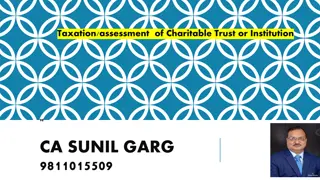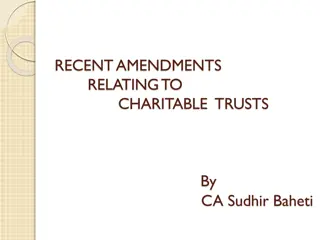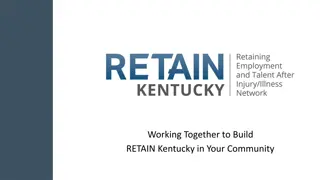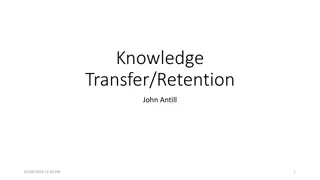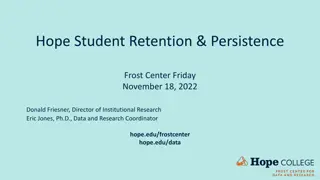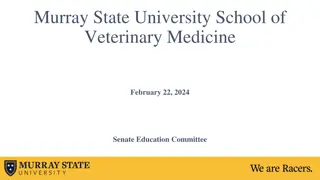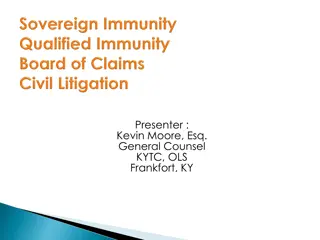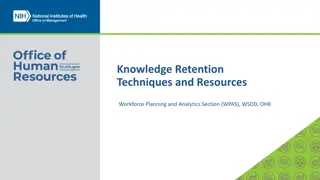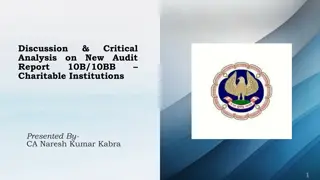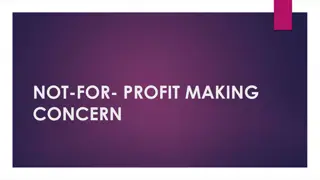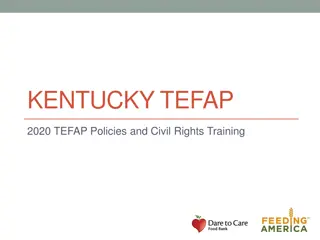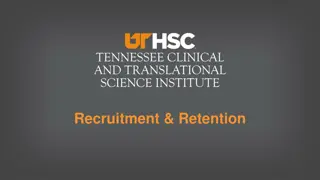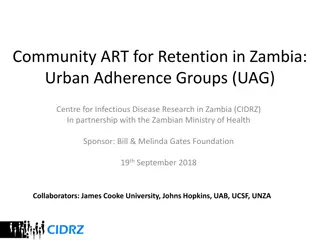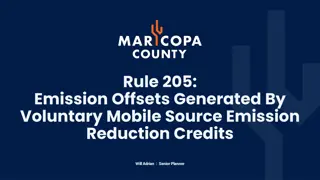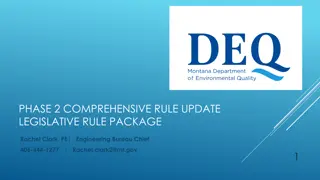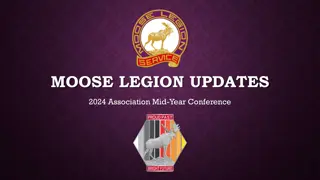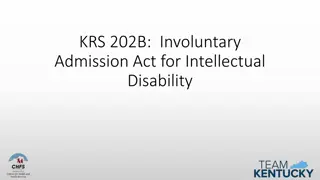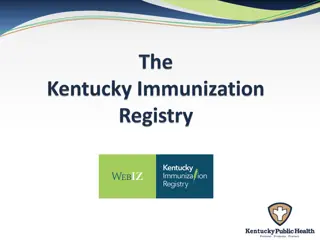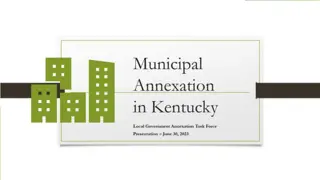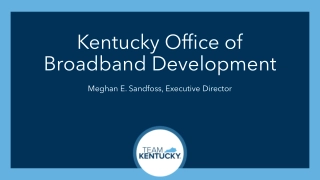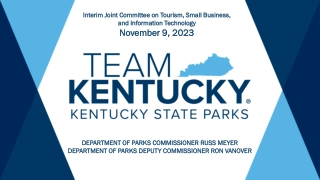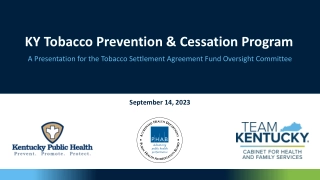Understanding the 40% Retention Rule for Charitable Organizations in Kentucky
The 40% Retention Rule in Kentucky mandates that a charitable organization must retain at least 40% of the adjusted gross receipts from charitable gaming for its charitable purposes. This rule ensures that funds generated from gaming activities are primarily used for the organization's intended charitable mission. Understanding the definitions of gross receipts, adjusted gross receipts, and net receipts is essential for compliance with this regulation.
Download Presentation

Please find below an Image/Link to download the presentation.
The content on the website is provided AS IS for your information and personal use only. It may not be sold, licensed, or shared on other websites without obtaining consent from the author. Download presentation by click this link. If you encounter any issues during the download, it is possible that the publisher has removed the file from their server.
E N D
Presentation Transcript
What is the 40% Retention Rule? KRS 238.536(1): The net receipts from charitable gaming retained by a charitable organization for the previous calendar year, provided the charitable organization was licensed at the start of the calendar year, shall be equal to or greater than forty percent (40%) of the adjusted gross receipts of the charitable organization for the same period.
All net receipts from charitable gaming must go toward the organization s charitable purpose. Common misunderstanding: It does not mean that 40% of the money a charity makes off charitable gaming must go toward a charitable purpose. Instead, A charity cannot spend more than 60% of the money it has left over after paying out the gaming winners on the expenses of operating gaming (e.g., supplies, rent, utilities).
Calculating Retention Percentage Net Receipts Adjusted Gross Receipts 40% Adjusted Gross Receipts Gross Receipts Net Receipts
Types of Receipts What are gross receipts, adjusted gross receipts, and net receipts? Gross receipts all money collected or received from the conduct of charitable gaming Adjusted gross receipts gross receipts less all cash prizes and the amount paid for merchandise prizes purchased (i.e., gross receipts minus winner payouts)
Types of Receipts Continued Net receipts adjusted gross receipts less all expenses, charges, fees, and deductions authorized under [KRS Chapter 238] (i.e., adjusted gross receipts minus expenses). Expenses identified in KRS 238.550 and 820 KAR must be paid with charitable gaming funds and factor into the retention percentage. Includes charitable gaming supplies and equipment; rent; utilities; insurance; advertising; janitorial services; bookkeeping and accounting services; security services; membership dues for a charitable gaming trade organization; banking fees; volunteer food; noncash items to incentivize volunteers to sell raffle tickets; volunteer clothing; payments to DCG; printing costs; payment for purchasing prizes; promotional items, federal taxes and fees, check collection fees.
Example Retention Percentage Calculation Suppose the Human Fund is a charitable organization licensed to conduct charitable gaming in the Commonwealth of Kentucky. The Human Fund is conducting a 50/50 Split the Pot raffle in which the winner will receive half of the proceeds of the raffle, and the Human Fund will retain the other half to use for its charitable purpose. Tickets for the raffle cost $1 each.
The Human Fund sells 2,000 tickets for $1 apiece. This generates $2,000 in gross receipts. Example Retention Percentage Calculation The winner of the raffle receives half the pot, which is $1,000. After paying the winner, the Human Fund is left with $1,000 of adjusted gross receipts. The Human Fund spent a total of $500 advertising the raffle and renting space to hold the drawing. After subtracting these expenses from the adjusted gross receipts, the Human Fund has $500 in net receipts. The Human Fund s net receipts ($500) constitute 50% of its adjusted gross receipts ($1,000). The Human Fund has complied with the 40% retention rule.
Penalties for Violation These penalties are firmly established by KRS 238.536. The Department does not have discretion to waive these penalties or to consider mitigating circumstances. Retention Percentage Penalty Six months probation Submit financial plan detailing how the licensee will achieve 40% retention, which must be approved by DCG. One year probation Submit financial plan detailing how the licensee will achieve 40% retention, which must be approved by DCG Six month review by DCG 35.0% - 39.9% 30.0% - 34.9%
Penalties for Violation Retention Percentage Penalty 25.0% - 29.9% One year probation Submit financial plan detailing how the licensee will achieve 40% retention, which must be approved by DCG Mandatory training by DCG Quarterly review by DCG Less than 25% in one year, OR Less than 40% in two consecutive years One year suspension of charitable gaming license Before license is reinstated, licensee must submit a financial plan detailing how the licensee will achieve 40% retention, which must be approved by DCG After reinstatement, one year probation and quarterly review by DCG
Benefits of the 40% Requirement Ensures that licensed charitable organizations are not operating on a thin margin Prevents charities from spending money on frivolous or unnecessary expenses Provides licensed charitable organizations leverage when negotiating prices for gaming supplies and rent The cost of charitable gaming supplies and rent for gaming space accounts for a substantial part of a charitable organization s expenses. Since the cost of gaming supplies and rent decreases a charity s net receipts, the 40% retention requirement is a valuable asset for charities.
Common Reasons For Not Meeting 40% Retention Paying too much for expenses, such as bingo supplies or facility rent Conduct gaming with variable profit margins Bingo: High payout games with low attendance and low bingo paper sales result in lower adjusted gross receipts, making it harder to reach the 40% retention goal. Raffles: Purchasing expensive prizes and not selling enough tickets to cover the cost of the prize. Pulltabs (paper or electronic) and 50/50 or split the pot raffles are the least risky forms of charitable gaming for organizations to meet the 40% standard.
40% Violation Statistics 40% Violation Statistics Number of 40% Violations (2017-2019) 40 30 20 10 0 2017 2018 2019 Violations Suspensions DCG has had between 500-600 licensed charitable organizations from 2017-2019. The number of organizations cited for violating this statute represents only 3-5% of the Department s licensed charitable organizations.
Impact of COVID Impact of COVID- -19 on 40% Retention 19 on 40% Retention 40% Violations (2017-2020) During the pandemic, several organizations continued to have expenses related to charitable gaming, such as rent and utility payments, with limited ability to generate funds through charitable gaming. 80 70 60 50 40 30 20 If not for the passage of 2021 HB 226, which gave charities a one year reprieve from the 40% rule, the number of charities that would have been placed on probation or suspended would have increased significantly. 10 0 2017 2018 2019 2020 Violations Suspensions
40% Retention: 1 40% Retention: 1st st Quarter 2021 Quarter 2021 11 Licensed charitable gaming organizations had a retention percentage less than 40%. 3 Had a retention percentage under 25%, which would result in a one-year suspension. Combined retention percentage of all licensed charitable organizations was 73.69%, which is up from the previous three-year average of about 63.2%. Source: Most recently available data (January through March) 2021:



